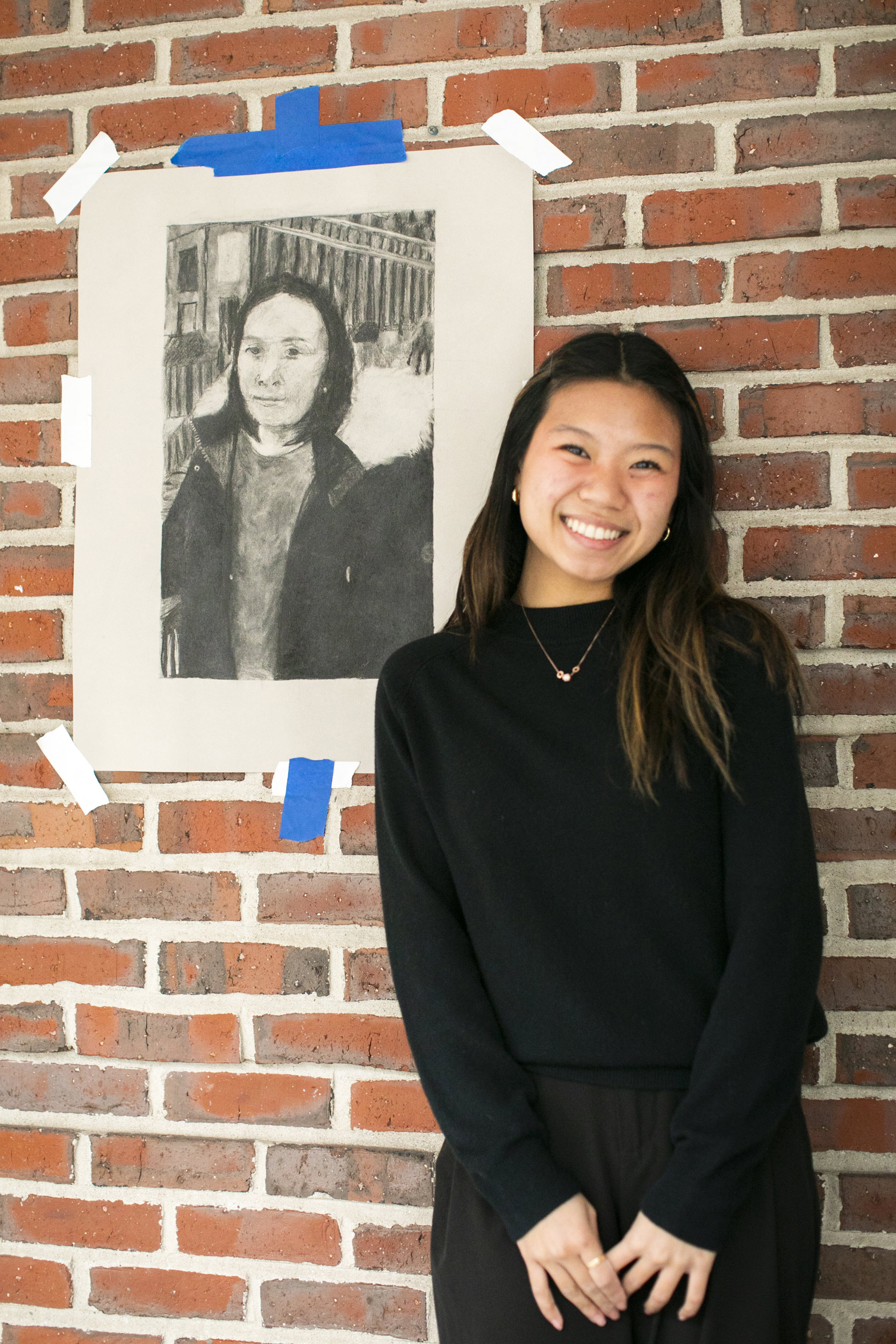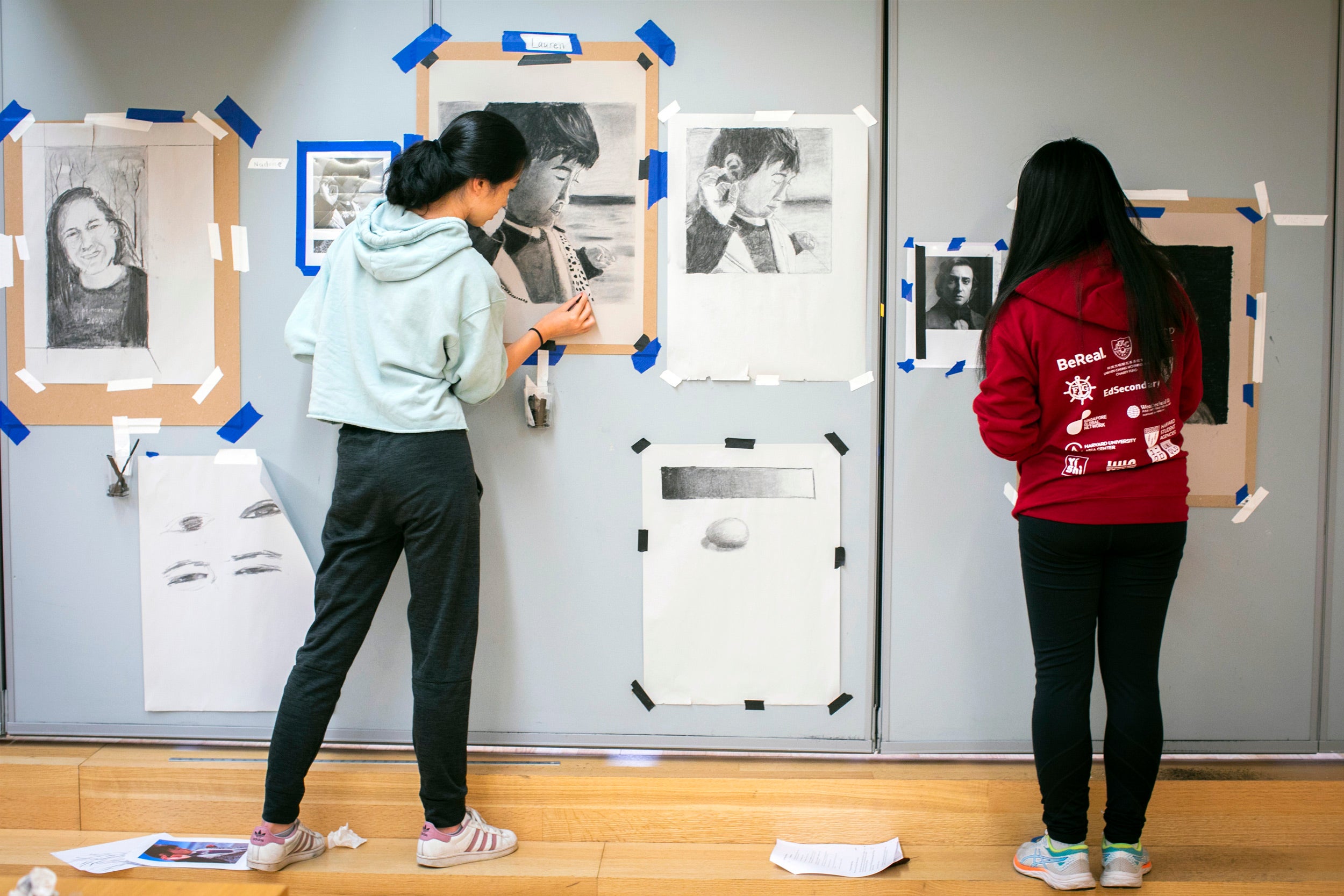
Over the two-day workshop, students create a charcoal drawing of someone important to them. Lauren Chen ’24 (left) and Minjue Wu ’22 work on their portraits.
Photos by Stephanie Mitchell/Harvard Staff Photographer
Picture this
Wintersession workshop helps students see their world in black and white
Enlivening an Adams House space during the relative calm of Wintersession, Stephen Coit ’71, M.B.A. ’77, and William Shen ’22, HMS ’26, co-taught a two-day portraiture workshop offered by the Office for the Arts.
“We have a pop-up studio here. We show up. We turned it into a world. We’re world creators,” said Coit. “I think COVID has changed the culture of students for a while. I’m happy to say in this class I see a return to commitment and passion … The students in this class are staying late. And they’re trying to get it right. They’re deeply committed to succeeding.”
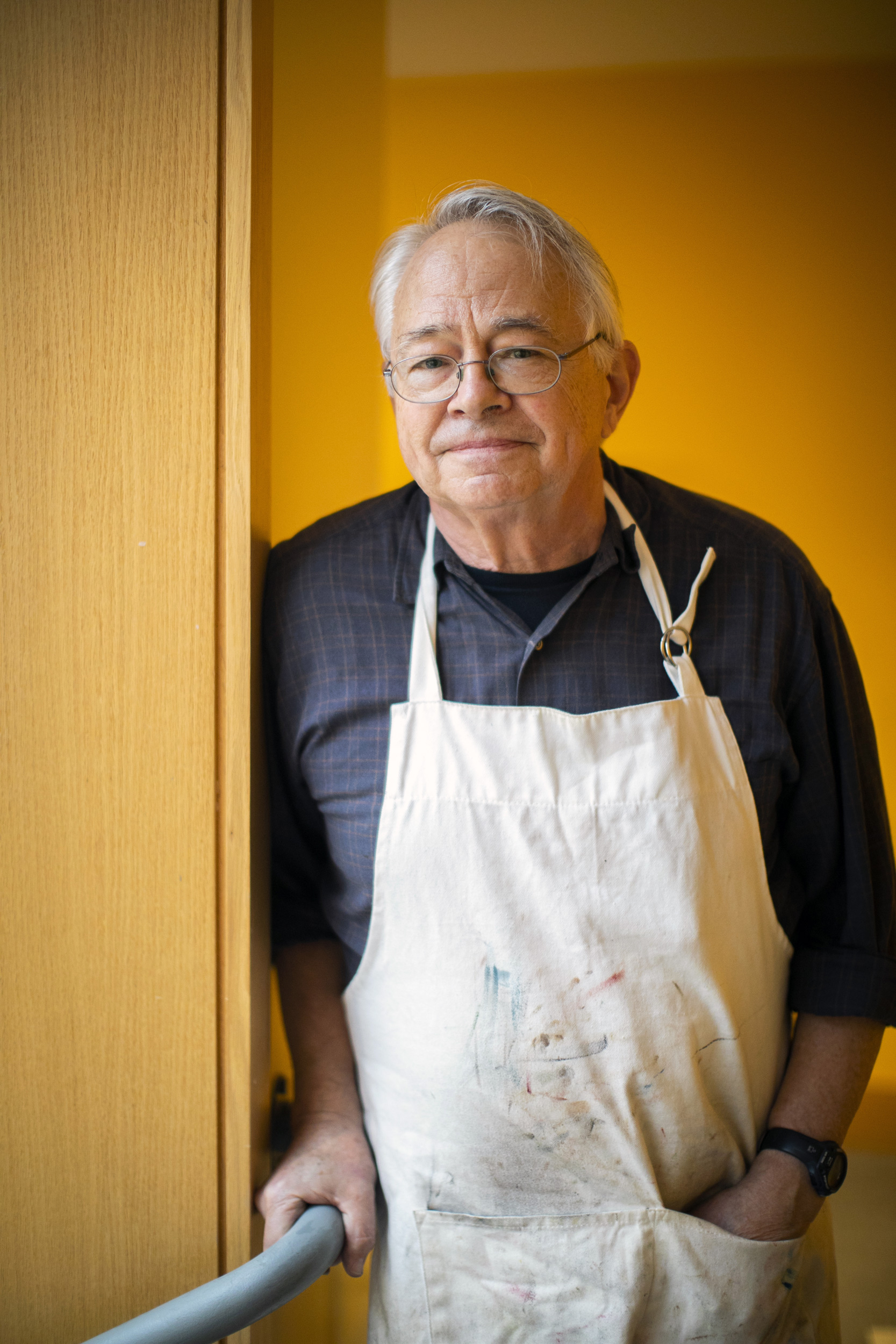
Coit and Shen, whose own portraits grace the halls of Harvard (Coit has 28 across the University, Shen has two in Adams House, and both counts continue to grow) shared lessons in art-making that very quickly translated to life lessons.
The students, a mix of undergraduate and graduate students, all of whom are engaged in studies outside of studio arts, absorbed lessons in perception and the importance of making mistakes.
“It is about venturing out and recovering,” Coit said. With sticks of charcoal and blackened erasers in hand, eight students crafted portraits of people they hold dear.
“The essence of drawing is not drawing what you believe to be there, but what is seen,” he said. “They’re all wrestling with banishing preconceived notions. And that is the key to drawing, is banishing preconceived notions.”
Translating color images to black and white allowed the students to explore questions about perception. “There’s actually a lot of optical illusions that are in play that we don’t really think about everyday … to paint not what you think you see, but what you actually see,” Shen shares. “In nature, there are no perfect lines. So in art, that’s the same thing. And we can actually take advantage of the way that our brain perceives the world by intentionally making some of the lines rougher.
“All of them understood pretty quickly, that you have to venture out, make mistakes, and fix them … And it’s a great life lesson.”
Sharing a student sentiment from the class, Coit said, “This course teaches you how you wish you had an eraser in your life. Because in this course, you use an eraser equally with charcoal to create what you want. And wouldn’t it be nice if you had a day-to-day eraser that worked in the same way?”
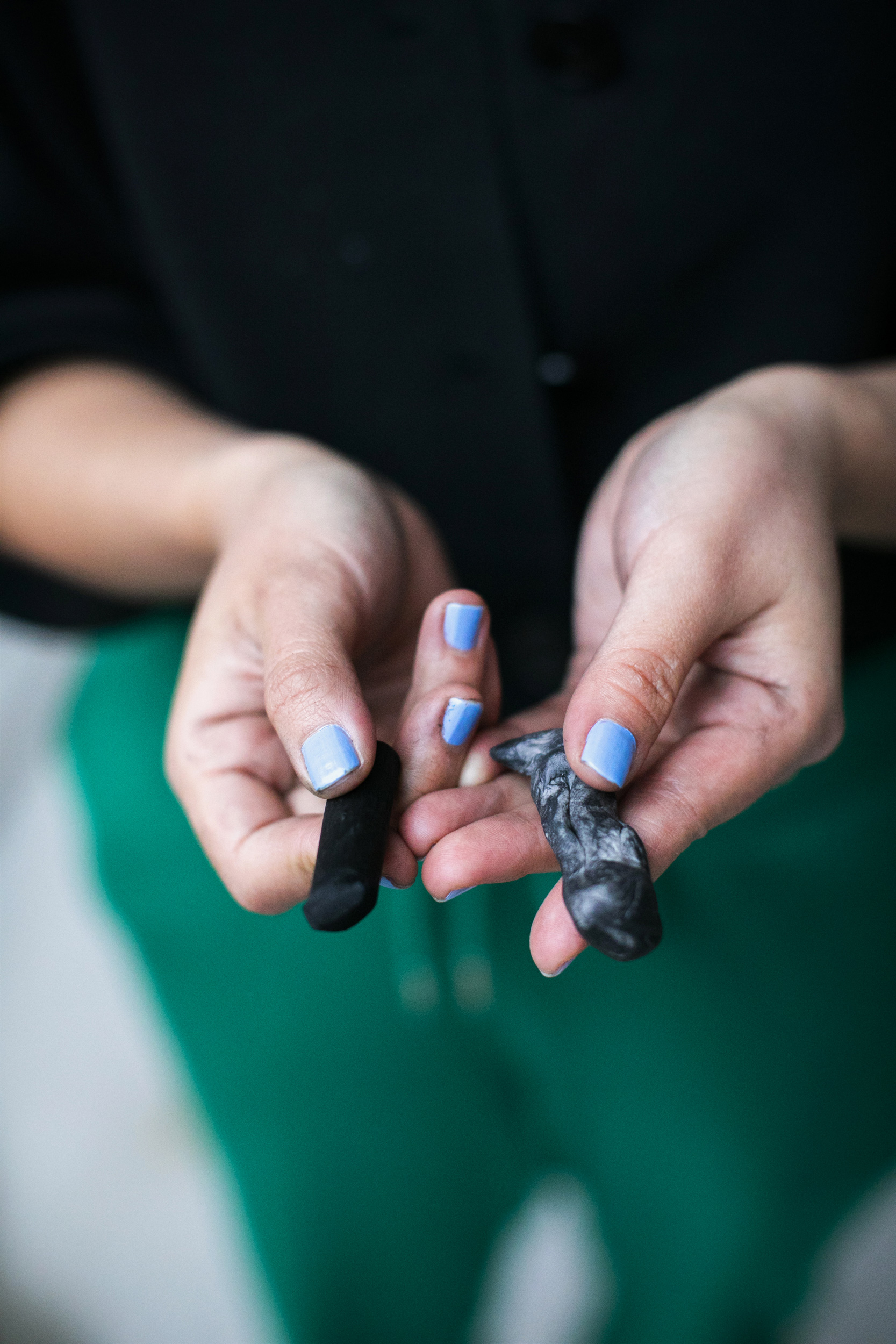
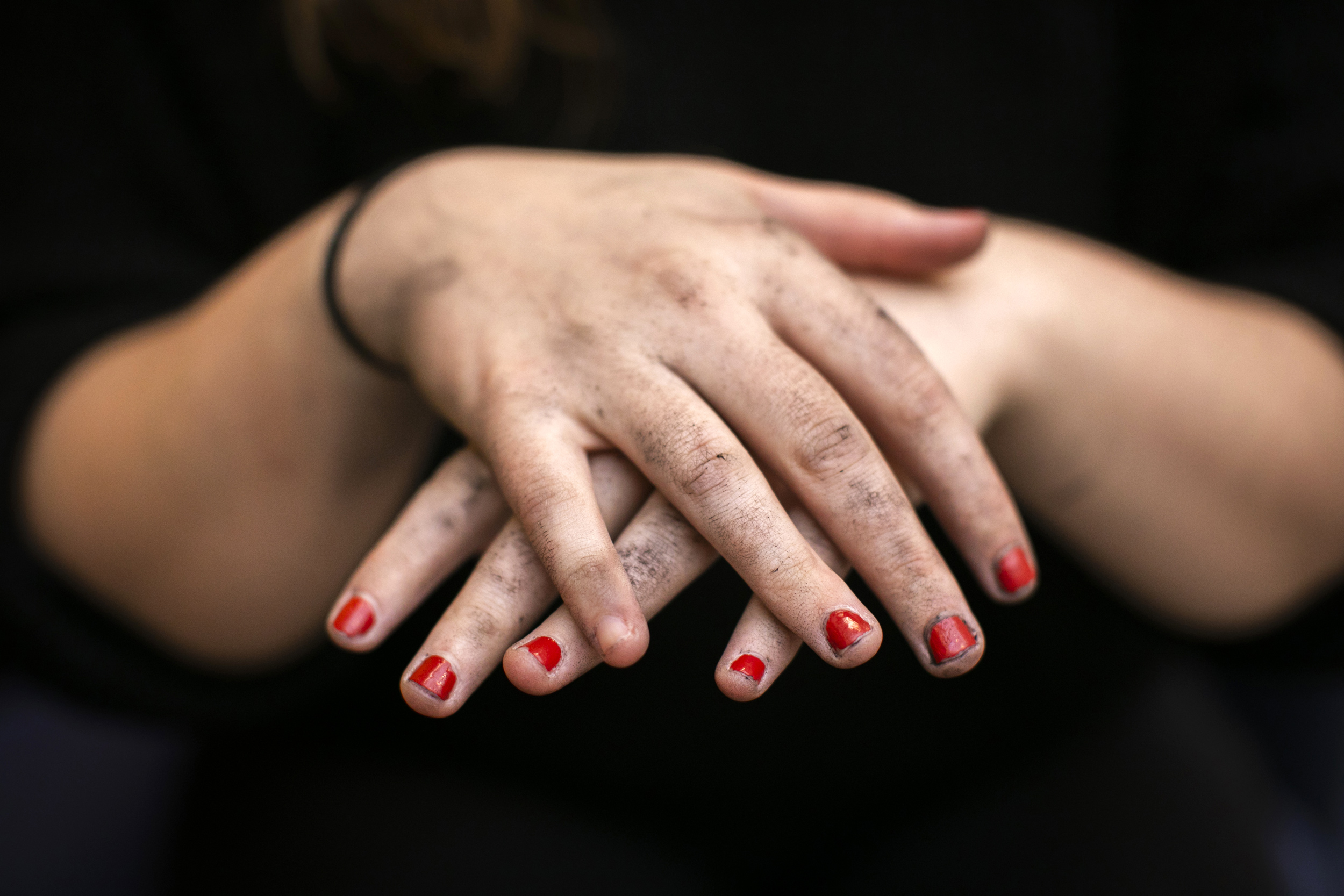
Dou Dou, HGSE ’23 (left), shares the basic tools for the class — charcoal and eraser — while Grace O’Sullivan ’24 shows her hands covered in charcoal dust.
William Shen ’22, HMS ’26
Paul Farmer
Co-teacher William Shen drew Paul Farmer, a special mentor from his undergraduate global health studies and a giant in public health who died last year, to demonstrate portraiture techniques. “I was very inspired by Paul since he really did espouse or live by his philosophy … valuing no life less than another and trying to aspire for a world in which health care for all is actually a reality.” Shen, now a medical student at Harvard Medical School who intends to specialize in medical oncology, painted social justice figures Frederick Douglass and Fred Korematsu in Adams House. He was pleased to co-teach his first class with art mentor Coit.
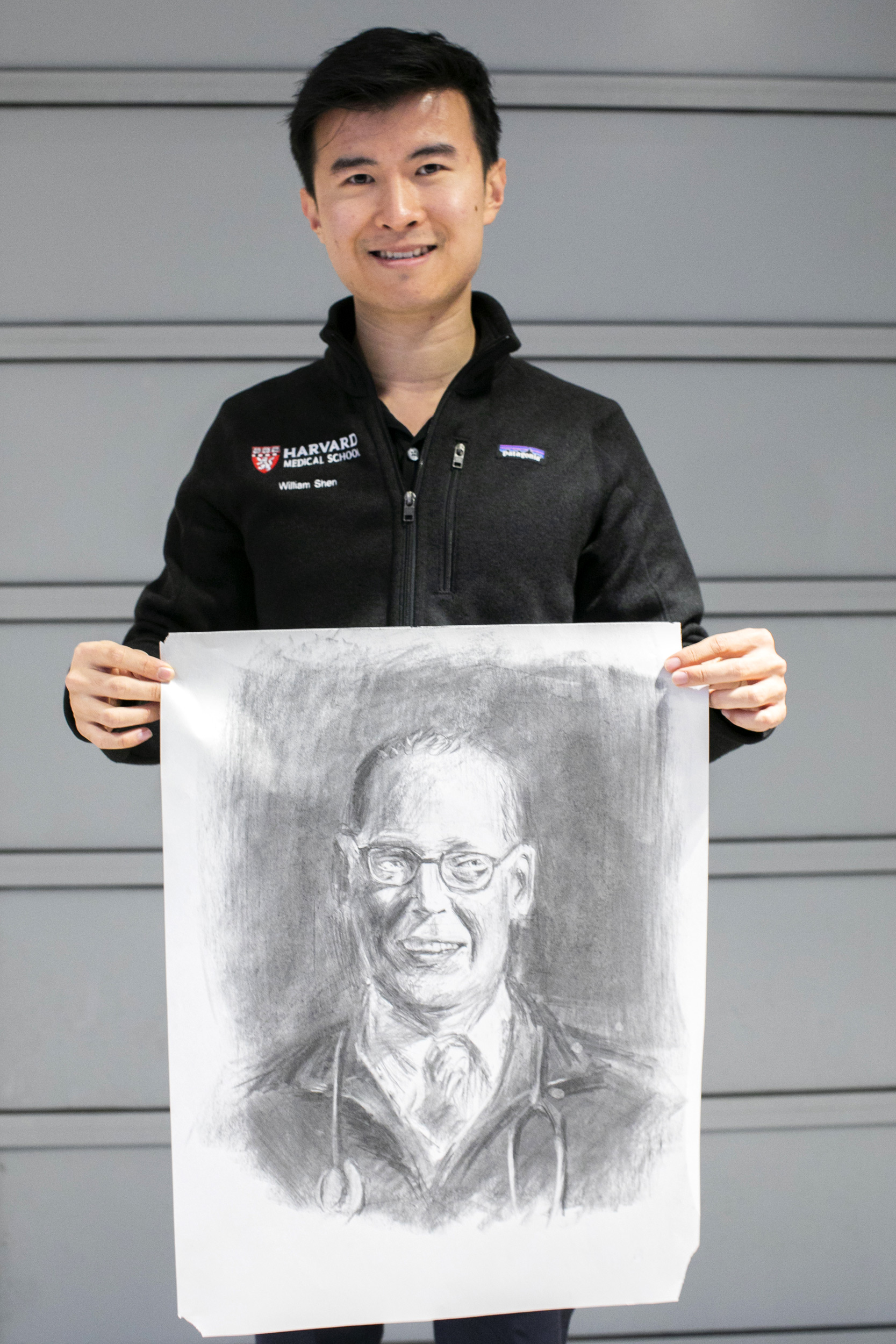
Minjue Wu ’22
Frédéric Chopin
For her first foray in charcoal, Wu, a classically trained pianist, selected a rendering of the composer as reconstructed by AI. “It was quite challenging but also unexpectedly athletic,” shared Wu. “The amount of force I needed to actually create the darker shade of charcoal needed for shadows was more than I anticipated, especially since I’ve only worked with acrylic or graphite before, and those were very easy to manipulate.” Wu, a recent College graduate, learned the beauty of flexibility and reiteration through her work with charcoal.
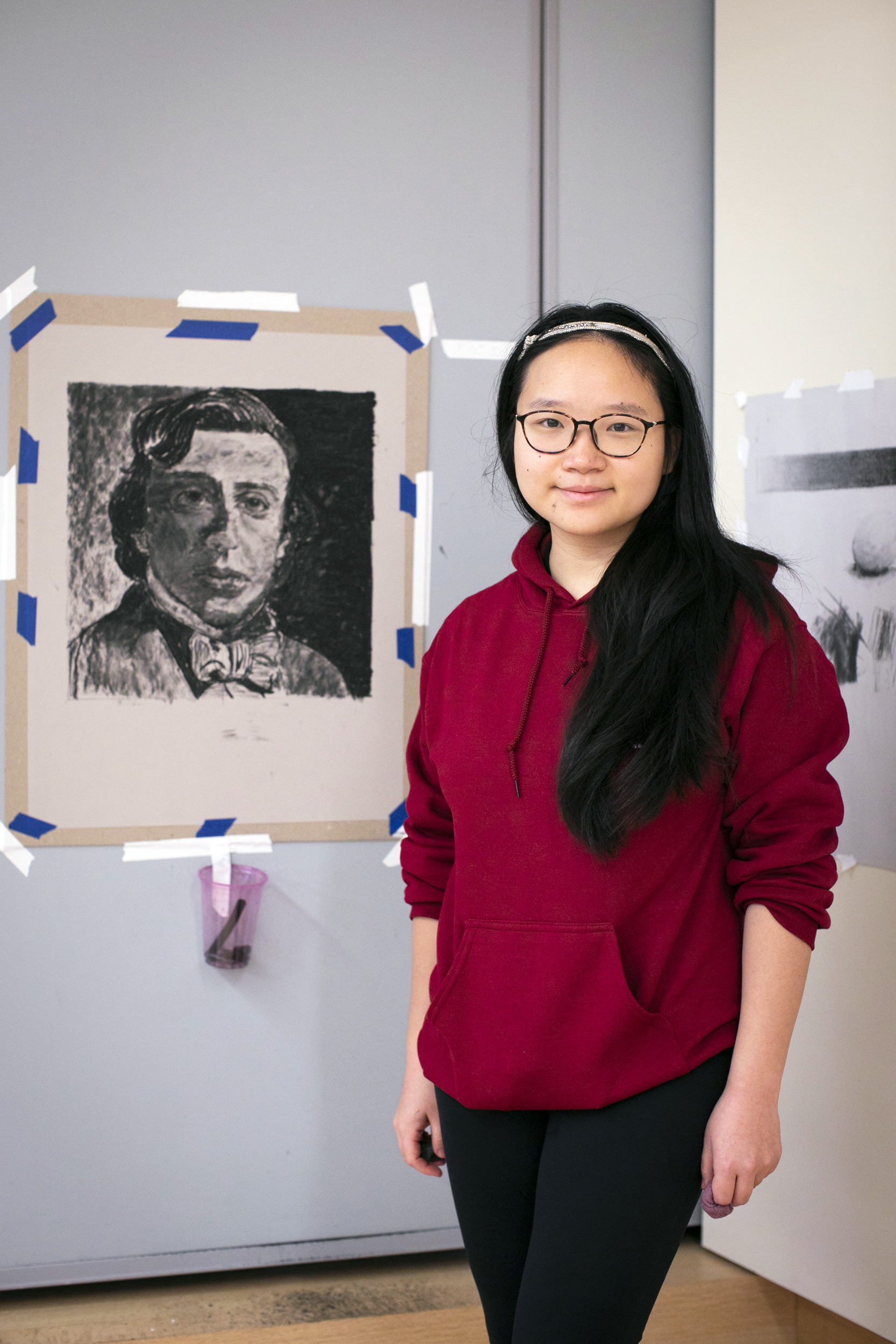
Dou Dou, HGSE ’23
Self portrait
“I’m very surprised by my progress, because it’s my first time ever drawing portraits and working with charcoal … I was very excited to learn something that’s completely new,” explained Dou, a graduate student at Harvard Graduate School of Education. “Then just in two days, I was already amazed by myself yesterday with literally a draft, right? And then today, I’m amazed by how much more progress I’ve even made from yesterday. But of course, kudos to Steve and William. We have a small class, so we get really in-depth help along the way.”
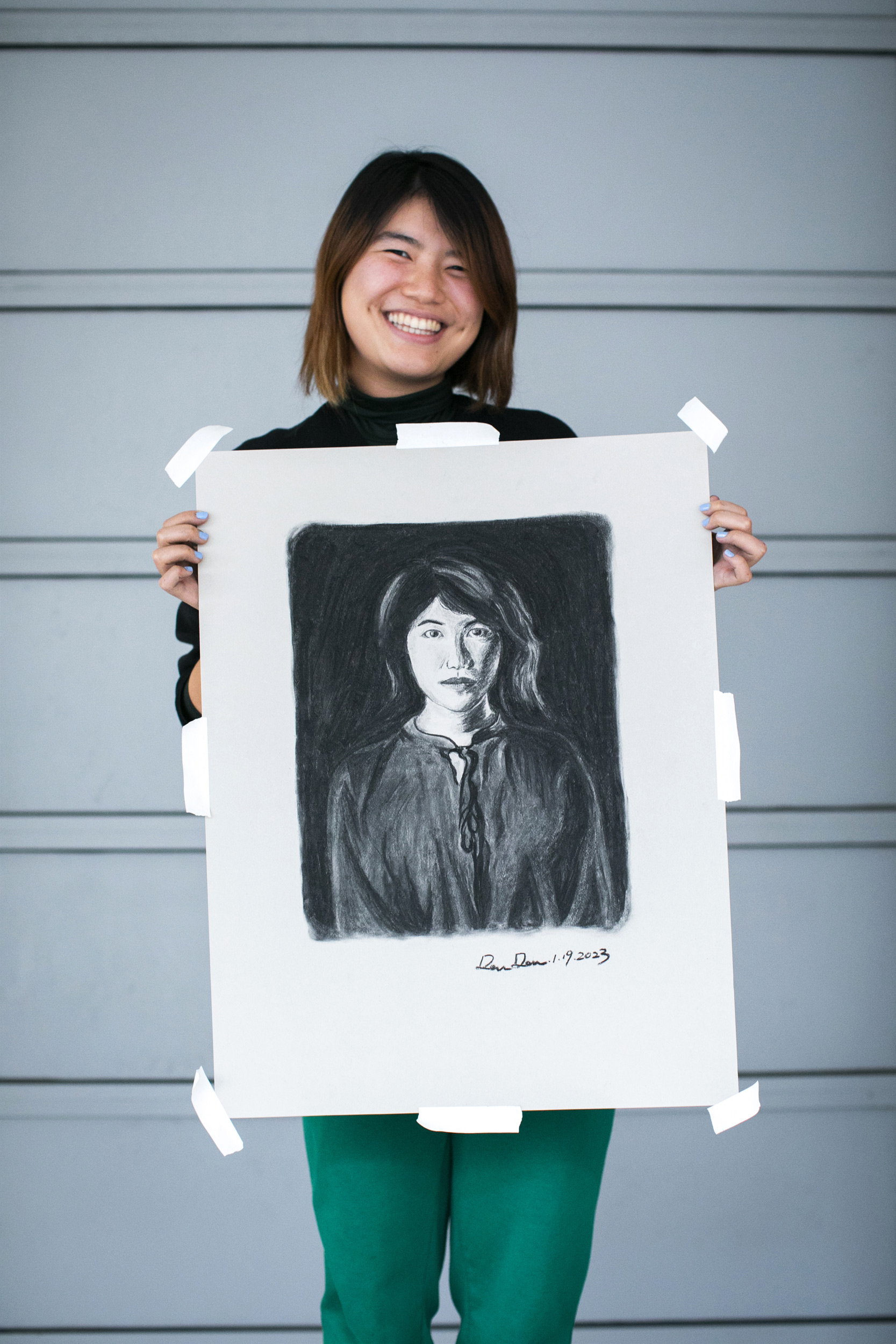
Grace O’Sullivan ’24
Her father
Tasked with picking someone to draw for whom she felt strong emotion, O’Sullivan selected her father. He passed away a few years ago. “I’m kind of excited to show my siblings. It’s our favorite photo of him.” While she learned oil painting from her aunt, O’Sullivan, a concentrator in government and in history, had previously painted landscapes and still-lifes, but never portraiture. Charcoal proved to be messy but enjoyable. She learned to layer on and then erase out of it. “It seems scary at first, but if you do it, it’ll make sense at the end. Just trust the process.”
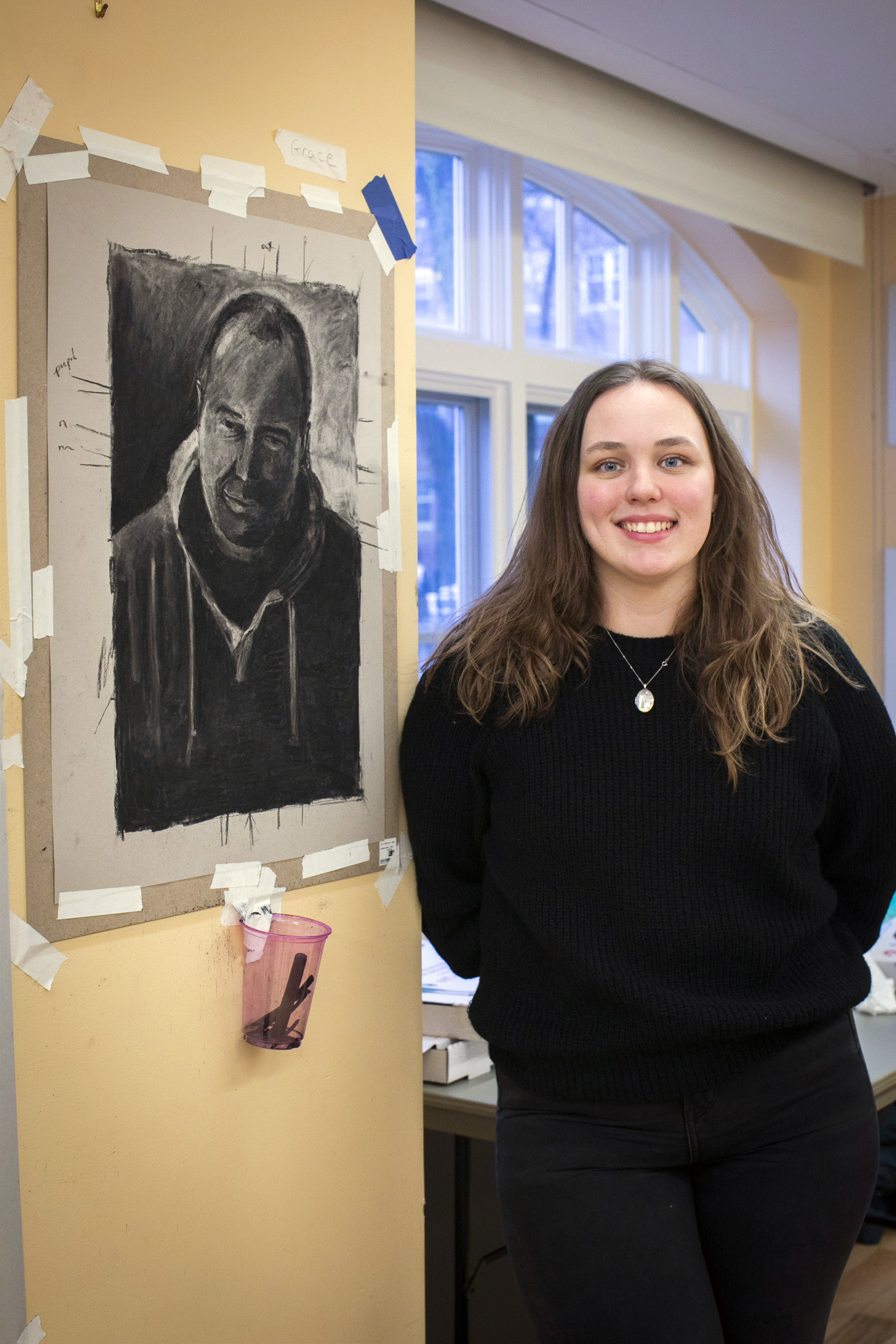
Aiden Bowers ’26
His mother
“She’s just the most important person in my life and always kind of has been. We’re extremely close. I would say maybe even closer than a lot of mothers and sons are. We just have a really special bond, and I thought she was worthy of putting into a portrait.” Bowers, a prospective neuroscience concentrator and an art enthusiast, took this class as an opportunity to try his hand at portraiture for the first time. “It’s been an uphill climb, but a really fun one that I’m really glad I’ve been doing. One of those challenges that every moment is worthwhile,” Bowers said. “There’s definitely a lesson to be taken about just being thrown into something new. And just getting out of that mindset of, ‘Oh, I’m bad at this,’ and into the mindset of, ‘I’m getting better at this,’ which can be applied to anything.”
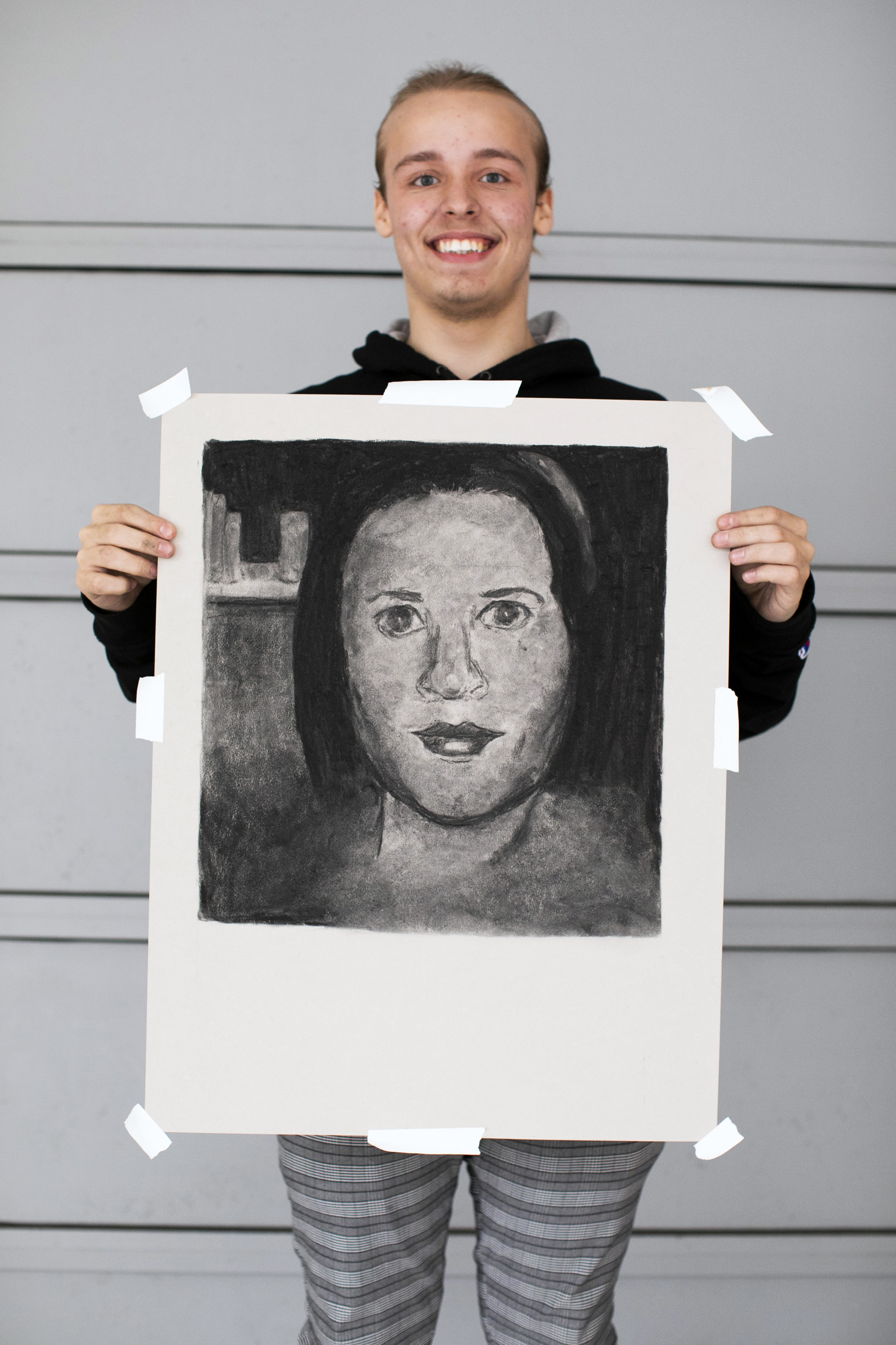
Lauren Chen ’24
Little sister Lillian
“The last time I took an art class was in middle school. In eighth grade, I actually did a self-portrait in charcoal … It was probably one of my favorite mediums that I learned about in art class. So this was very fun for me to go back and take another art class in the same medium,” said Chen, a math and statistics concentrator who drew her little sister Lillian. “Steve gives us a lot of wise advice,” Chen stated. “He says take a step back and look at the whole picture. Because a lot of times when you go back in for a second layer, things will move around. And I definitely noticed that in my own drawing. I think taking a step back to see how all the pieces fit together is really helpful in both art and also in academics and life in general.”
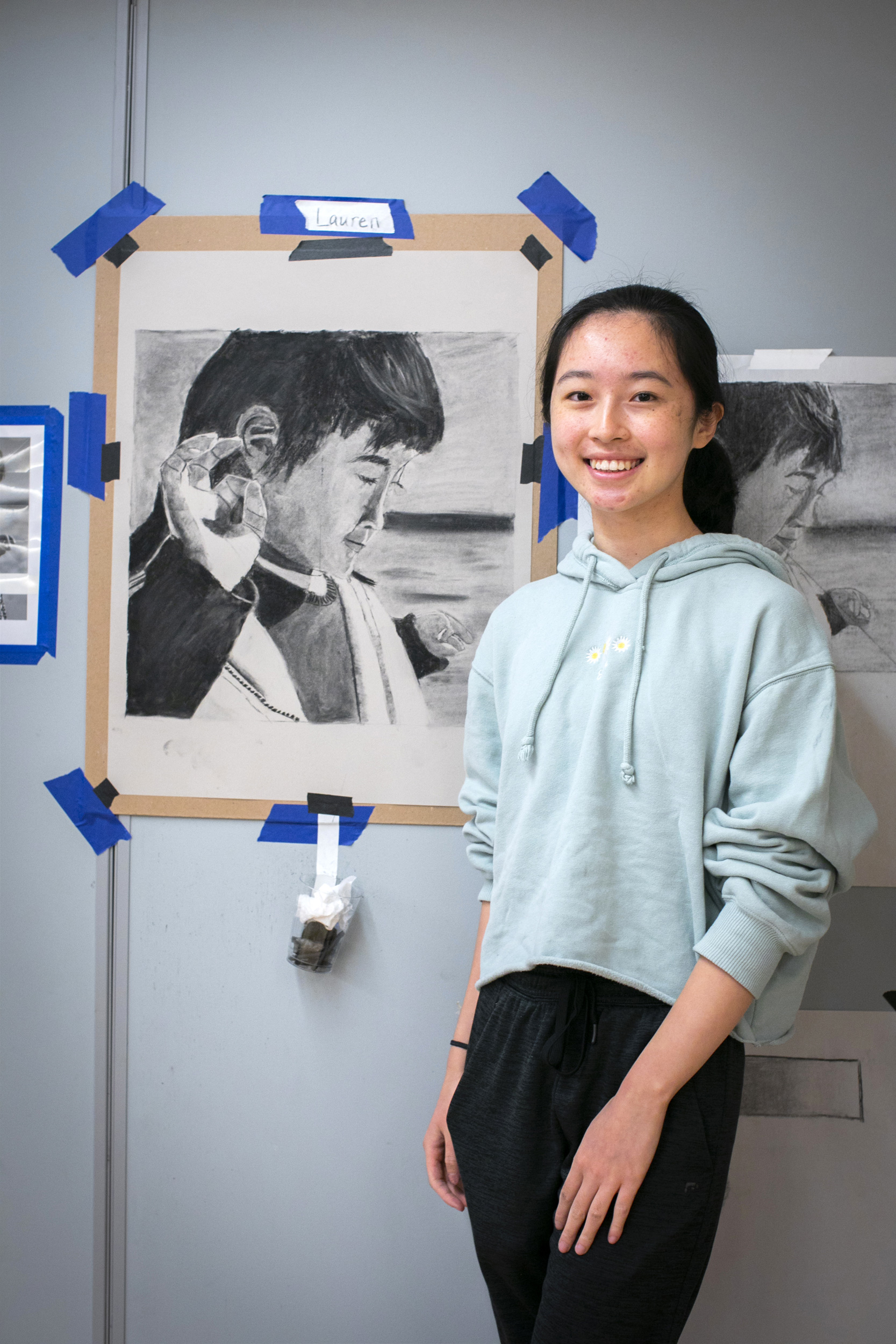
Chloe Koulefianou ’23
Self portrait
Having won an award in fourth grade for a self-portrait, Koulefianou decided to take on the task again. She found charcoal challenging, preferring to work with pencil. “It’s frustrating. Everything keeps smudging. It’s definitely been a learning process.” Upbeat nonetheless, she acknowledged, “You won’t be able to do everything right, but it’s been rewarding to make those mistakes.” Koulefianou, who is concentrating in social studies and African studies with a citation in French, gathered useful lessons from the workshop: “To be super precise, having to map out where each of the features are before drawing them has been super helpful.”
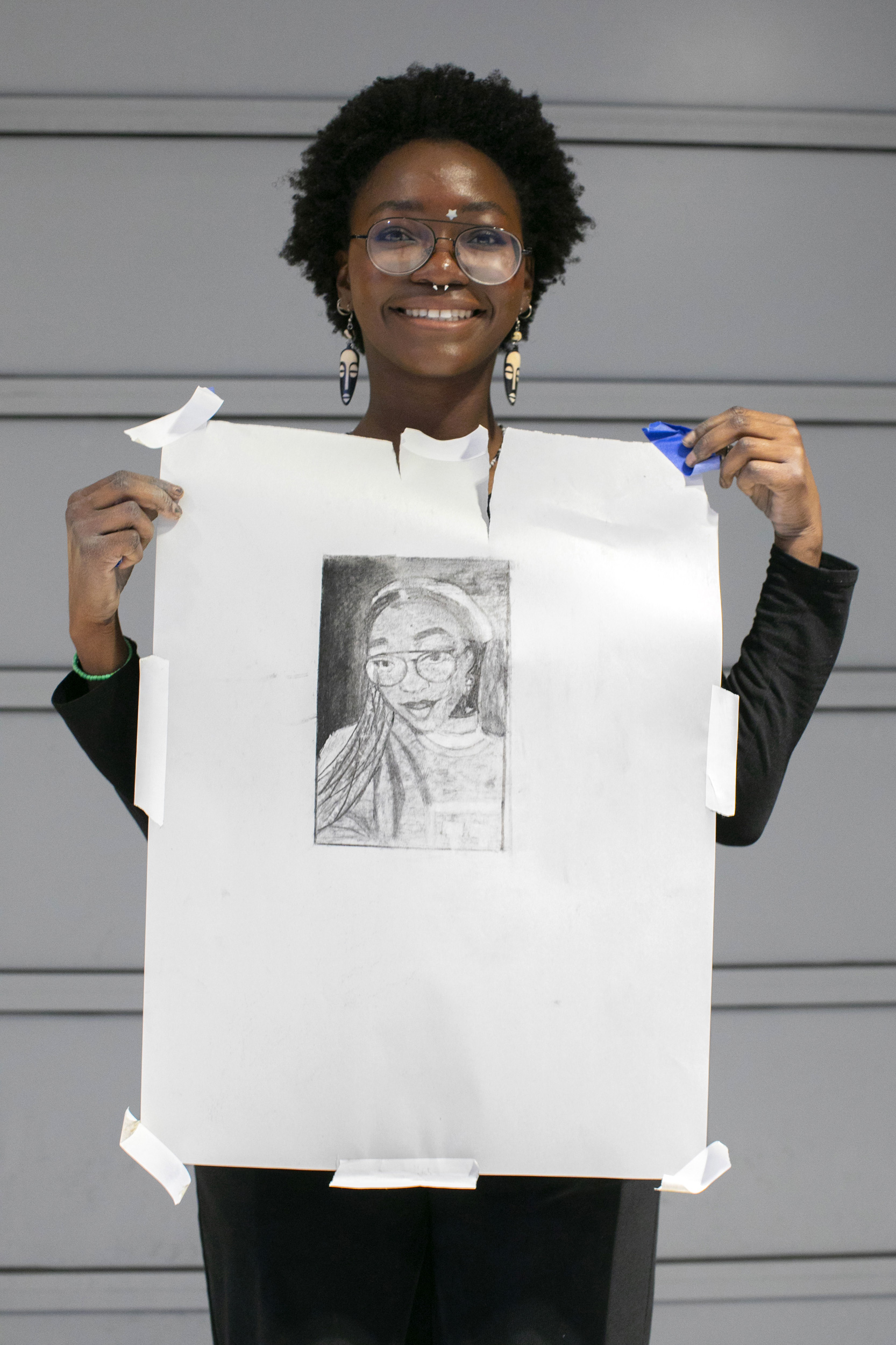
Kayla Zethelyn ’25
Her mother
Zethelyn decided to portray her mother. “Whenever we would go on family trips, she would be the one taking pictures of us, but she would never be the one to be in the picture,” Zethelyn said. “It was very hard to find a picture of her where she was close enough to the camera that I could focus on her features.” Experienced in needle art, crocheting, and knitting, Zethelyn, a computer science concentrator, had painted a few small canvases before but had no experience with charcoal. She enjoyed the process of creating textures and light. “To do that it’s very important to have darkness around the thing that we’re trying to bring light to.”
